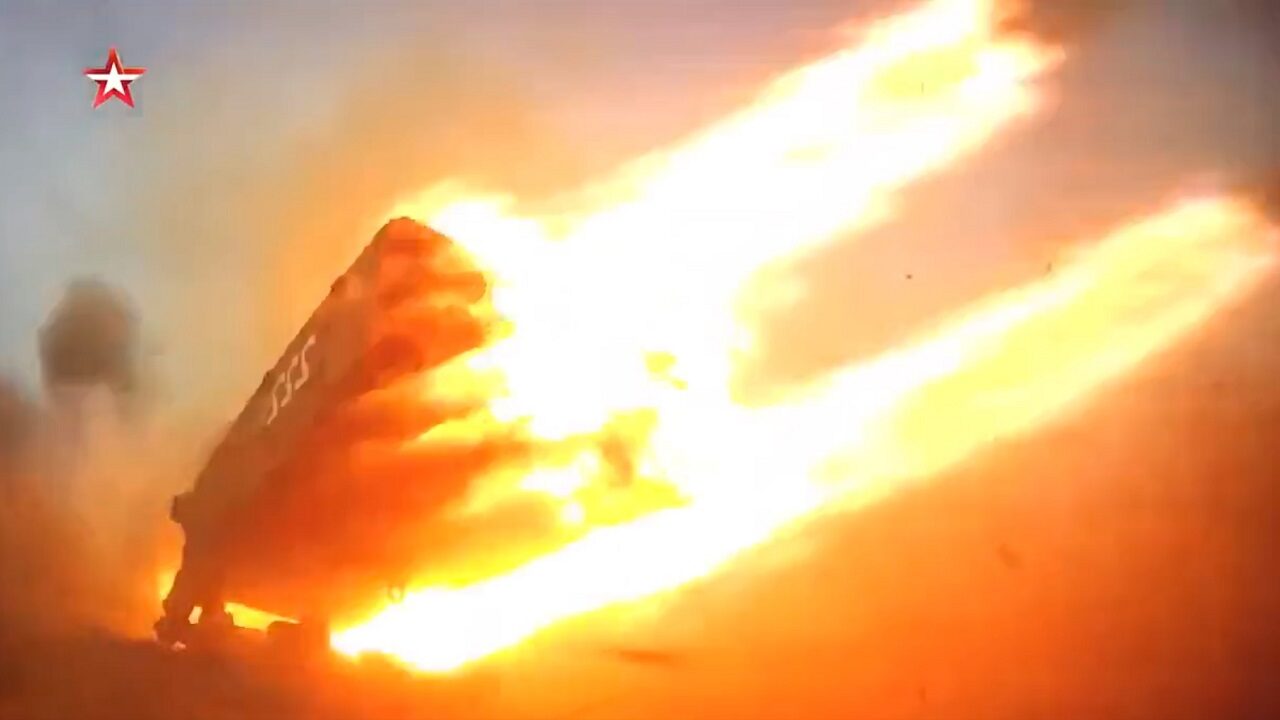Russian President Vladimir Putin announced on Saturday night during an interview on Russian state television that he will station tactical nuclear weapons in neighboring Belarus. The Russian leader stated that Russia would maintain control of the weapons and that construction of the storage facilities should be completed by July 1.
Tactical nuclear weapons have a shorter range and lower yield than the nuclear warheads used on long-range missiles. Although President Putin did not specify how many tactical nukes would be stationed in Belarus, it is believed that Russia has around 2,000 in its arsenal, including nukes that can be deployed from aircraft, as artillery rounds, and from short-range missiles.
President Putin argued that Russia is only following the lead of the United States by moving tactical nukes to a neighboring territory, noting that the United States has stationed nuclear weapons in allied countries while preparing “launch platforms” and training crews. The timing of the move, however, suggests that Putin is looking to intimidate NATO forces into reducing the supply of weapons to Ukraine.
“There is nothing unusual here either: firstly, the United States has been doing this for decades. They have long deployed their tactical nuclear weapons on the territory of their allied countries,” Putin said, adding that he would not violate any international agreements.
“We agreed that we will do the same – without violating our obligations, I emphasize, without violating our international obligations on the non-proliferation of nuclear weapons.”
During the interview, President Putin revealed that Belarusian dictator Alexander Lukashenko had long requested that Russia station nuclear weapons in his country over fears of the further eastward expansion of NATO. Putin also reminded viewers that in 2022, Russia helped modernize the Belarusian armed forces, upgrading fighter jets to ensure they are capable of carrying nuclear weapons. Ten of these planes have since been completed, meaning any nuclear weapons stationed in Belarus could quickly be deployed. Additionally, the tactical nuclear weapons could also be launched by the short-range Iskander missiles Russia provided to Belarus in 2022.
The placement of tactical nuclear weapons in Belarus is possibly the most overt nuclear signal from Moscow since the war in Ukraine began last year. According to the Russian president, new storage facilities for the weapons will be ready by July 1, suggesting that the weapons could be moved as early as this summer. Putin did not, however, confirm how many nuclear weapons will be deployed to the country and may never do so. Russian forces will also maintain control over all nuclear weapons deployed to Belarus, much in the same way that the United States maintains control of its weapons located on territories controlled by NATO allies.
Is The Move Necessary?
Russia’s decision to move the weapons to Belarus will not make it significantly easier for Russia to use nuclear weapons in any European state. Russia already has the ability to strike anywhere in Europe using nuclear weapons, making the move more symbolic than anything.
Speaking to The Hill, John Erath of the Center for Arms Control and Non-Proliferation said that Russia is simply moving smaller weapons from one facility to another.
“The fact that they’re moving some of these smaller nuclear weapons from one barn to another doesn’t really change the equation,” Erath said, adding that the move is designed to make the conflict so dangerous or uncertain that Ukraine and Ukraine’s allies decide the war is “too much effort to fight.”
Erath argued that Putin’s decision makes it even more important for Ukraine to win the war, too, suggesting that Putin’s tactics will be used by the likes of North Korea in the future if the West backs down.
Belarus Defends the Decision
Belarus seems to be supportive of the move, too. On Tuesday, March 28, Belarus said that it had accepted Russia’s request – and even suggested the United States is to blame.
“Over the last two and a half years, the Republic of Belarus has been subjected to unprecedented political, economic and information pressure from the United States, the United Kingdom and its NATO allies, as well as the member states of the European Union,” Belarusian Foreign Minister Sergei Aleinik said in a statement this week.
“In view of these circumstances, and the legitimate concerns and risks in the sphere of national security arising from them, Belarus is forced to respond by strengthening its own security and defence capabilities.”
The United States reacted to the news with caution. In a statement over the weekend, the spokeswoman for the Biden National Security Council said that thee U.S. has seen no reason to adjust its “strategic nuclear posture” over Putin’s move, adding that the U.S. has seen no indication that Moscow is “preparing to use a nuclear weapon.”
MORE: PAK DA – Is Russia New Stealth Bomber a Joke?
MORE: Was the F-14 Tomcat Retired Too Early?
MORE: Nimitz-Class – The Best Aircraft Carrier Ever?
Jack Buckby is 19FortyFive’s Breaking News Editor. He is a British author, counter-extremism researcher, and journalist based in New York. Reporting on the U.K., Europe, and the U.S., he works to analyze and understand left-wing and right-wing radicalization, and reports on Western governments’ approaches to the pressing issues of today. His books and research papers explore these themes and propose pragmatic solutions to our increasingly polarized society.

